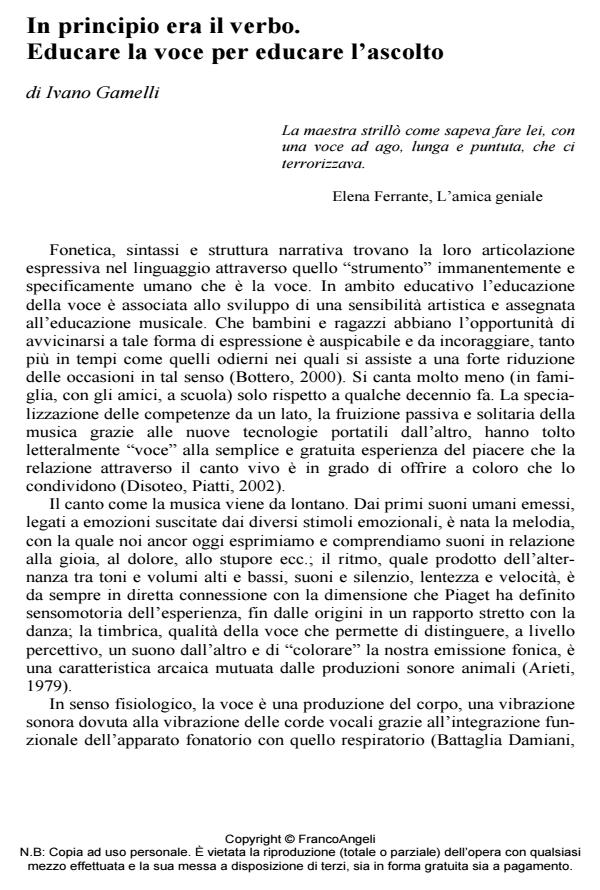In the Beginning was the Verb. Educate your Voice to Educate Listening
Journal title EDUCATIONAL REFLECTIVE PRACTICES
Author/s Ivano Gamelli
Publishing Year 2016 Issue 2016/2
Language Italian Pages 10 P. 195-204 File size 175 KB
DOI 10.3280/ERP2016-002013
DOI is like a bar code for intellectual property: to have more infomation
click here
Below, you can see the article first page
If you want to buy this article in PDF format, you can do it, following the instructions to buy download credits

FrancoAngeli is member of Publishers International Linking Association, Inc (PILA), a not-for-profit association which run the CrossRef service enabling links to and from online scholarly content.
The voice, even before the word of which the vehicle is thus understood in its phonic quality, is the ' "essential tool of the educational relationship. A tool that every teacher and educator constantly uses to explain, to talk, to call, to give and take away the word. And yet, and it is important to emphasize this, almost never in his now multi-year university training, that even includes a variety of disciplines and knowledge, who invited him to take charge of a reflective competence for the task that awaits him (Fabbri, Striano, Melacarne, 2008),it is the least taught to "use it", to recognize it, at least to become aware. It’s possible, but above all what it can mean, educate the voice? What they tell us, and how you can meet the items "undisciplined" of the "actors" of any educational occurrence? Learn to use it does not mean much to acquire the techniques, but to acknowledge the way in which we, through the voice, starting from our history we relate (in "resonance") with ourselves, with others and with the environment that we surrounds. The educational awareness and research tracks on the item, which are the subject of this reflection, we recall, in particular, the close connection between the size of the item and that of listening, a connection that contains the form and the emotional-affective game into which it unravels the fate of every educational process
Ivano Gamelli, In principio era il verbo. Educare la voce per educare l’ascolto in "EDUCATIONAL REFLECTIVE PRACTICES" 2/2016, pp 195-204, DOI: 10.3280/ERP2016-002013